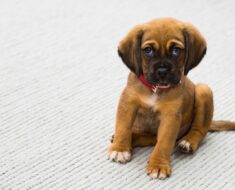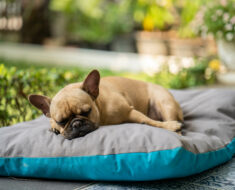Have you ever wondered how to keep your dog’s bed fresh and clean without harming your furry friend? Dog beds can accumulate odors, dirt, and allergens over time, making regular cleaning essential for your pet’s health and comfort.
While Lysol is a popular disinfectant that effectively eliminates germs and odors, pet owners often question whether it is safe to use on their dog’s bedding.
In this article, we will explore the suitability of spraying Lysol on dog beds, discuss safe cleaning alternatives, and provide tips for maintaining a hygienic sleeping environment for your beloved pet.
Here, can dog ride on the bed of truck?
Can i spray lysol on dog bed?
Spraying Lysol on a dog bed is not recommended. While Lysol is effective for disinfecting surfaces and eliminating odors, it contains chemicals that can be harmful to pets. Dogs can be sensitive to strong fragrances and chemical residues, leading to respiratory issues or skin irritation.
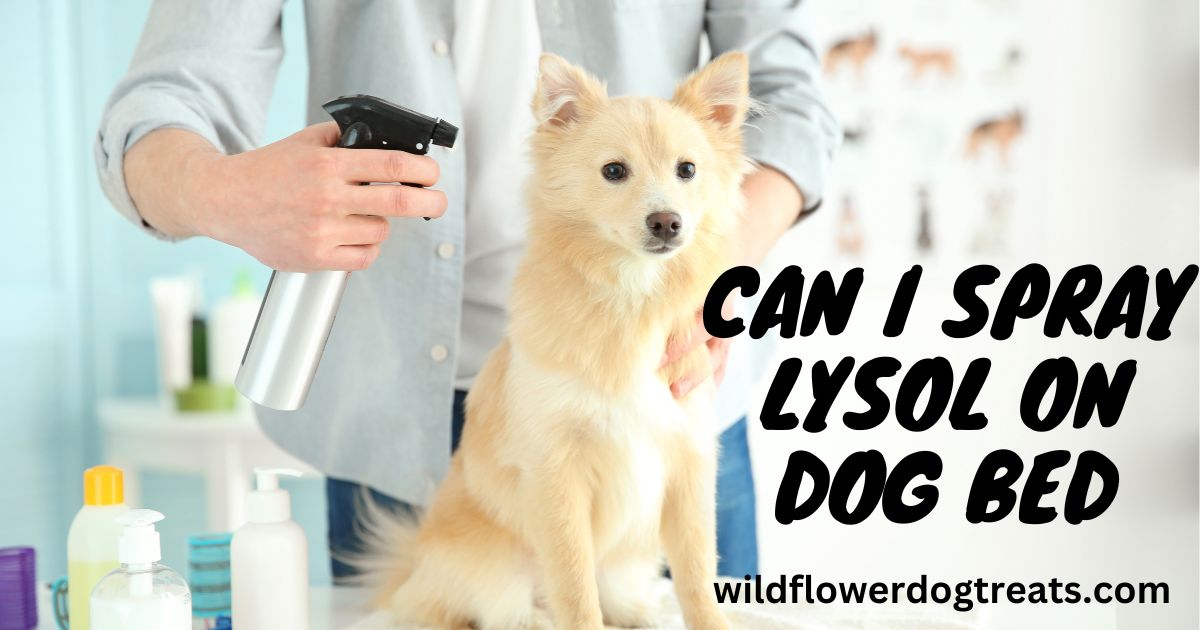
Instead, consider using pet-safe cleaning products designed specifically for dog bedding. Regularly washing the dog bed in hot water and using pet-friendly detergent can help remove odors and bacteria. You can also sprinkle baking soda on the bed to neutralize smells before vacuuming it up.
If you feel the need to disinfect, allow the bed to air out completely after cleaning and ensure no residual chemicals are present before allowing your dog to use it again. Prioritizing your dog’s health and comfort should always come first when cleaning their bedding.
What is lysol spray?
Lysol spray is a popular disinfectant product designed to kill germs, bacteria, and viruses on various surfaces. Manufactured by Reckitt Benckiser, Lysol comes in aerosol and pump spray forms, making it easy to apply on hard and soft surfaces, such as countertops, bathroom fixtures, and fabrics.
The active ingredients typically include quaternary ammonium compounds, which are effective against a wide range of pathogens, including those responsible for illnesses like the flu and common cold. Lysol spray is also known for its ability to eliminate odors, leaving a fresh scent in the area where it’s used.
Available in various fragrances and formulations, Lysol offers options for disinfecting, deodorizing, and cleaning. While it is effective for household sanitation, it’s essential to use it according to the manufacturer’s instructions and ensure adequate ventilation during application, especially in enclosed spaces, to avoid inhaling strong fumes.
How long after spraying Lysol is it safe for pets?
After spraying Lysol, it is generally recommended to wait at least 30 minutes before allowing pets to return to the treated area. This waiting period ensures that the spray has dried completely and that any potentially harmful chemicals have dissipated.
However, it’s essential to follow the specific instructions on the Lysol product label, as different formulations may have varying recommendations.
To further ensure safety, make sure to ventilate the area by opening windows and doors to allow fresh air to circulate. If your pet has a history of respiratory issues or sensitivities, it’s wise to extend the waiting period to an hour or more.
Here, are dogs allowed in bed bath and beyond?
Always monitor your pet for any signs of discomfort or irritation after reintroducing them to the area. If you’re concerned about safety, consider using pet-safe cleaning products specifically designed for households with animals, which can be used without such waiting times.
How do you disinfect dog bedding?
To disinfect dog bedding effectively, start by removing any loose hair or debris using a vacuum or lint roller. If the bedding is machine washable, check the care label for instructions.
Wash it in hot water with a pet-safe detergent to eliminate bacteria and odors. Adding a cup of white vinegar during the rinse cycle can help disinfect and neutralize odors naturally.
For bedding that isn’t machine washable, you can spot clean using a mixture of water and pet-safe disinfectant or mild soap. Scrub the soiled areas with a brush, then wipe with a damp cloth.
After cleaning, ensure the bedding dries completely to prevent mold growth.
If the bedding is particularly smelly, you can sprinkle baking soda over it, let it sit for a few hours, and then vacuum it up. Regular cleaning and disinfection not only maintain hygiene but also ensure your dog’s comfort and health.
Can you spray bedding with Lysol?
Yes, you can spray bedding with Lysol to help disinfect and eliminate odors, but caution is essential. Lysol spray is effective in killing germs and bacteria on various surfaces, including bedding.
However, it’s crucial to ensure that the product is suitable for fabric use. Always check the label for specific instructions regarding fabric surfaces.
Here, how to block dogs going under the bed?
Before applying, test a small, inconspicuous area to ensure that the spray does not cause discoloration or damage. When spraying, hold the can about 6-8 inches away from the fabric and apply it evenly, allowing it to air dry completely before using the bedding again.
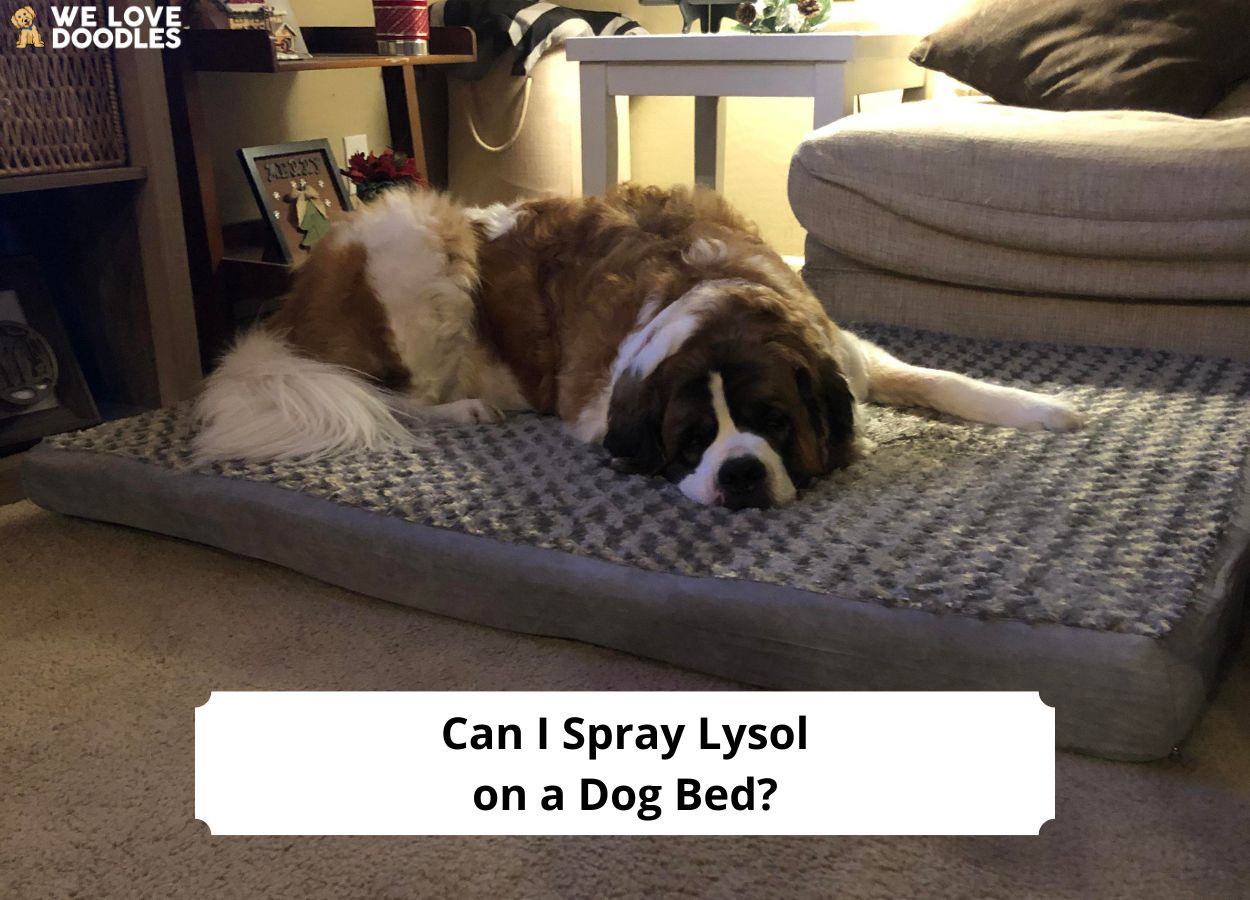
Ensure proper ventilation in the area during and after application to reduce strong odors. It’s important to note that while Lysol can help disinfect, it should not replace regular washing and cleaning practices for bedding, especially in households with pets or allergies.
How can I deodorize a dog bed?
Deodorizing a dog bed can be done effectively using several methods. Start by removing any loose hair and debris with a vacuum or lint roller.
If the bed is machine washable, wash it in hot water with a pet-safe detergent, adding a cup of white vinegar during the rinse cycle to neutralize odors.
For non-washable beds, sprinkle baking soda generously over the surface and let it sit for a few hours or overnight. Baking soda absorbs odors naturally; afterward, vacuum it up.
You can also use a mixture of equal parts water and white vinegar in a spray bottle to lightly mist the bed, then allow it to air dry.
Another option is using pet-safe enzymatic cleaners specifically designed to eliminate pet odors. Regular cleaning and deodorizing will keep your dog’s bed fresh and comfortable, promoting a healthier environment for your pet.
5 Steps to spray lysol on dog bed
9 places to spray lysol when you have dog
Here are nine places to spray Lysol when you have a dog:
Step 1: Dog Bed
Spraying Lysol on your dog’s bed is essential for maintaining a clean and hygienic sleeping area. Dog beds can harbor odors, bacteria, and allergens from pet dander, saliva, and dirt. Lightly mist the bed with Lysol and allow it to dry thoroughly before your dog uses it again.
This not only helps eliminate unpleasant smells but also reduces the risk of infections and allergies for both your pet and household members. Regular disinfection of the dog bed can promote a healthier environment and prolong the lifespan of the bedding.
Step 2: Living Room Furniture
Your living room is likely a shared space where your dog spends time, making it essential to keep it clean. Spray Lysol on couches, chairs, and cushions to eliminate pet odors and germs.
Make sure to test a small area first to ensure the fabric won’t be damaged. Pay special attention to areas where your dog frequently rests or plays, as these spots can accumulate dirt and bacteria. After spraying, let the surfaces dry completely before allowing your pet back onto the furniture to ensure their safety.
Step 3: Dog Toys
Dog toys are often exposed to saliva and dirt, making them a breeding ground for bacteria and odors. Lightly spray Lysol on rubber or plastic toys, then wipe them down with a clean cloth. Avoid soaking the toys to prevent any chemical residues that could harm your pet.
Here, why does my dog take my sock to bed?
For fabric toys, it’s best to wash them according to the manufacturer’s instructions, as some may not be suitable for disinfectant sprays. Regularly disinfecting dog toys keeps your pet healthy and helps maintain a fresher smell in your home.
Step 4: Pet Crates
Pet crates are a common space for dogs, serving as their den or sleeping area. To keep them clean, spray the interior and exterior surfaces of the crate with Lysol. This helps eliminate odors and bacteria that can accumulate from pet waste, hair, and moisture.
After spraying, use a cloth to wipe down the surfaces and remove any excess product. Ensure the crate is well-ventilated to allow the disinfectant to dry completely before placing your dog back inside. Regularly disinfecting the crate contributes to a healthier environment for your pet.
Step 5: Entryways and Hallways
Entryways and hallways can collect dirt, mud, and pet hair, especially after outdoor walks. Spraying Lysol in these areas can help eliminate odors and disinfect high-traffic spots.
Focus on doormats, walls, and floors where your dog frequently enters and exits. Ensure the area is well-ventilated during application and allow sufficient drying time. Regularly cleaning these spaces helps maintain a fresher home environment and reduces the risk of tracking dirt and allergens throughout the house.
Step 6: Car Interior
If your dog often travels with you, the car interior can develop unpleasant odors from pet hair and spills. Spraying Lysol on the seats, floor mats, and interior surfaces can help eliminate these smells and disinfect the area.
Make sure to allow the spray to dry completely before letting your dog back in. Additionally, consider using a pet-specific cover or blanket to protect your car’s interior from dirt and hair, making it easier to maintain a clean environment for both you and your pet.
Step 7: Outdoor Areas
For outdoor spaces where your dog plays, such as patios or porches, using Lysol can help disinfect surfaces that may come into contact with dirt, bacteria, or pet waste. Lightly spray outdoor furniture, pet play areas, and surfaces your dog frequently visits.
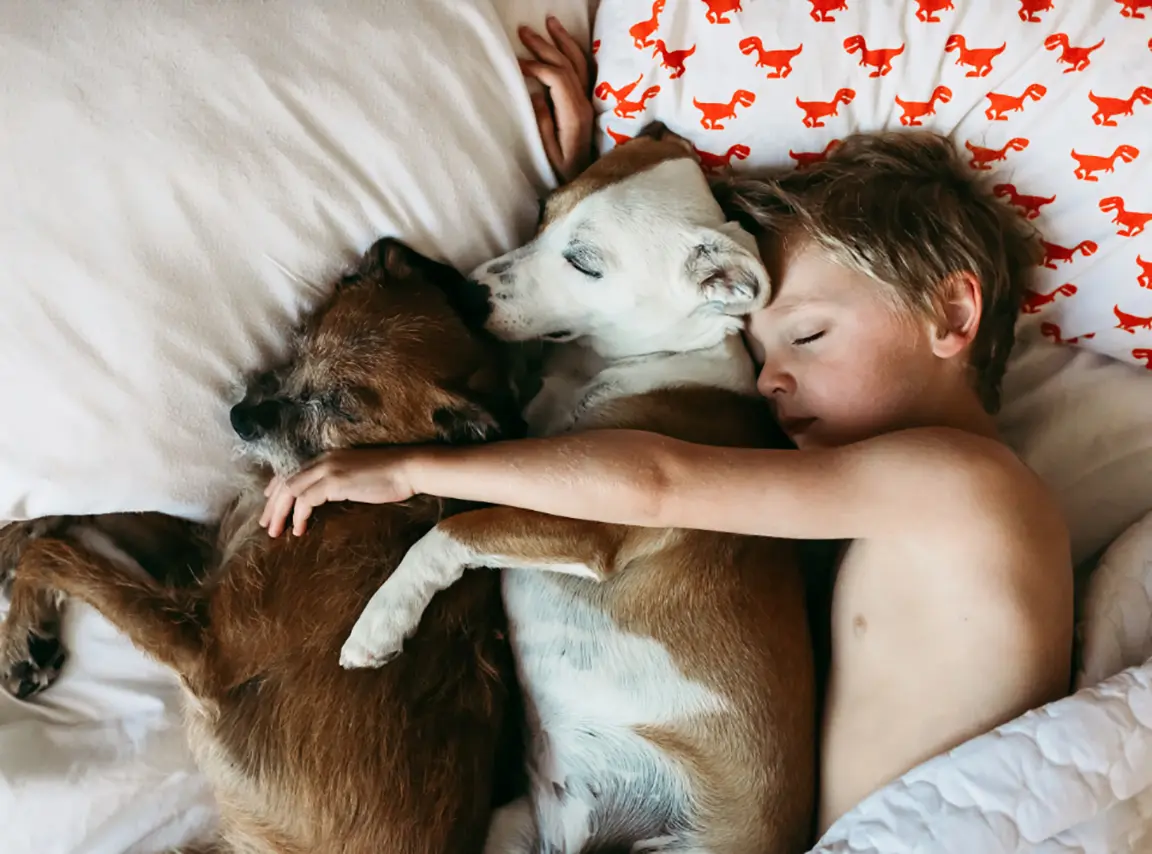
Ensure the area is well-ventilated and avoid spraying plants or grass directly, as the chemicals may harm them. Regularly disinfecting these spaces contributes to a cleaner environment for your dog, reducing the risk of infections and keeping the area smelling fresh.
Step 8: Dog Grooming Tools
Dog grooming tools, such as brushes and clippers, can harbor dirt, hair, and bacteria if not cleaned regularly. Spraying Lysol on these tools helps disinfect them and eliminate odors.
Here, why do dogs dig on the bed and couches?
After applying the spray, allow the tools to dry thoroughly before using them on your pet. This practice not only keeps your grooming tools clean but also reduces the risk of transferring germs to your dog during grooming sessions. Regularly disinfecting your grooming tools contributes to your pet’s overall health and well-being.
Step 9: Floors
Hardwood, tile, and laminate floors can accumulate pet hair, dirt, and dander. Spraying Lysol on these surfaces can help disinfect and eliminate odors, particularly in areas where your dog frequently walks or lies down. Use a mop or cloth to spread the spray evenly and ensure it dries completely.
For carpets, lightly mist the area and allow it to air dry. Regularly disinfecting your floors helps maintain a cleaner, healthier living environment for both you and your pet, reducing allergens and unpleasant smells.
My dog gets on my bed i use lysol disinfectant spray to take the dog smell off my bed as i have asma will it kill my dog
Using Lysol disinfectant spray on your bed can help eliminate odors, but caution is essential, especially if you have asthma and a dog.
While the spray effectively kills germs and bacteria, it contains chemicals that can be harmful to pets. To ensure your dog’s safety, allow the sprayed area to dry completely and ventilate the room before letting your dog back onto the bed.
If you’re concerned about potential irritation, consider using pet-safe cleaning products or methods to deodorize your bed, such as washing the bedding regularly or using baking soda to absorb odors without harsh chemicals.
Signs of Lysol poisoning in dogs
Lysol poisoning in dogs can manifest through various symptoms.
Common signs include drooling, vomiting, diarrhea, and difficulty breathing, indicating potential respiratory distress. Dogs may also exhibit lethargy, loss of appetite, or unusual behavior, such as whining or pacing.
If ingested, signs may include stomach upset or irritation. Skin irritation or redness can occur if the product comes into contact with their skin. In severe cases, seizures or collapse may happen.
If you suspect your dog has been exposed to Lysol, it’s crucial to seek veterinary attention immediately to ensure proper care and treatment.
Is Lysol toxic to dogs after it dries
Once Lysol disinfectant spray dries, it is generally considered safer for dogs. The drying process allows most of the harmful chemicals to dissipate, reducing the risk of toxicity.
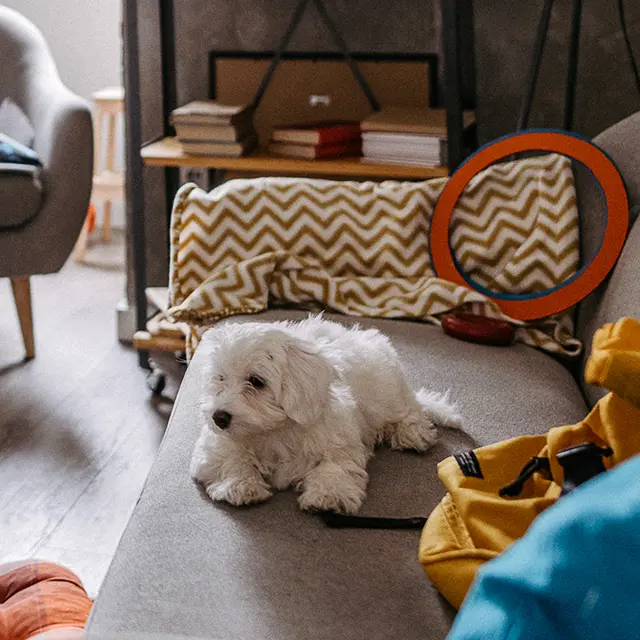
However, some residues may still remain, so it’s essential to ensure the area is well-ventilated and allow sufficient drying time before allowing your dog back into the space.
Keep in mind that some dogs may still be sensitive to certain ingredients even after drying. If your dog has a history of respiratory issues or allergies, consider using pet-safe cleaning products as a precaution to ensure their safety and well-being.
I sprayed Lysol around my dog?
If you’ve sprayed Lysol around your dog, it’s important to monitor them closely. The chemicals in Lysol can be harmful to pets, potentially causing respiratory issues or skin irritation. Ensure the area is well-ventilated to help disperse any lingering odors.
If your dog shows any signs of distress, such as coughing, sneezing, drooling, or unusual behavior, it’s crucial to seek veterinary attention immediately.
To prevent future incidents, consider using pet-safe cleaning products that are specifically designed to be non-toxic and safe for animals. Always read product labels and allow sufficient drying time before letting your dog return to the area.
Lysol Pet Solutions
Lysol Pet Solutions is a line of cleaning products designed specifically for pet owners, addressing the unique challenges of maintaining a clean and odor-free home while ensuring the safety of pets.
These products are formulated to effectively eliminate pet odors, stains, and allergens without harsh chemicals that could harm animals. Lysol Pet Solutions includes disinfectant sprays, surface cleaners, and other pet-friendly options, making it easier to keep living spaces clean.
The formulations are designed to tackle common pet-related messes while providing a safe environment for pets and their owners. Always follow the instructions to ensure proper usage and safety.
Lysol Pet Solutions Odor Eliminator
Lysol Pet Solutions Odor Eliminator is a specialized cleaning product designed to tackle tough pet odors in your home. Formulated to neutralize unpleasant smells from urine, feces, and other pet-related messes, it provides a powerful solution for pet owners seeking a fresher living environment.
Here. where to donate used dog bed near you?
This odor eliminator is safe to use on various surfaces, including carpets, upholstery, and hard floors. Its fast-acting formula not only masks odors but also helps eliminate bacteria and allergens associated with pet messes.
To achieve the best results, follow the instructions on the label and allow the treated area to dry completely before allowing pets back in.
Is Lysol safe after it dries
After Lysol disinfectant spray dries, it is generally considered safer for humans and pets, as most harmful chemicals dissipate during the drying process.
However, some residues may still linger, which can potentially irritate sensitive pets, especially those with respiratory issues or allergies.
To ensure safety, it’s crucial to allow adequate drying time and ensure proper ventilation in the area. Always follow the product’s instructions regarding usage and drying times.
If your pet shows any signs of discomfort or distress after exposure, consult a veterinarian for advice and care. Using pet-safe cleaning alternatives can also be a good precaution.
Lysol Pet Spray
Lysol Pet Spray is a cleaning solution specifically designed for pet owners, aiming to tackle odors and messes associated with pets.
This spray effectively eliminates pet odors from surfaces like carpets, upholstery, and hard floors, providing a fresher environment. Formulated to neutralize bacteria and allergens, Lysol Pet Spray helps maintain cleanliness while ensuring safety for both pets and their owners.
It is essential to follow the instructions on the label for proper use and to allow adequate drying time before allowing pets back into treated areas. This product is a convenient and effective way to keep homes smelling fresh and clean.
Related faq’s
Is Lysol spray safe for dogs?
Lysol spray is not generally considered safe for dogs. While it effectively kills germs and eliminates odors, it contains chemicals that can be harmful to pets, especially if inhaled or ingested.
Dogs may experience respiratory issues, skin irritation, or gastrointestinal upset if they come into contact with the spray or its residues. To ensure your dog’s safety, it’s best to use pet-safe cleaning products specifically designed for households with animals.
If you do use Lysol spray, make sure to allow the area to dry completely and ensure proper ventilation before allowing your dog back into the treated space.
Is Lysol Safe to Use Around Dogs
Lysol is not considered safe to use around dogs. The disinfectant contains chemicals that can be harmful if inhaled or ingested, potentially leading to respiratory issues, skin irritation, or gastrointestinal problems in pets.
Even after drying, residues may remain and could still pose a risk.
To keep your home clean without endangering your dog’s health, opt for pet-safe cleaning products specifically formulated for households with animals. If you must use Lysol, ensure that the area is well-ventilated, and allow sufficient drying time before allowing your dog back into the space to minimize any potential risks.
Can I spray my dog with Lysol?
No, you should not spray your dog with Lysol. The chemicals in Lysol can be harmful to pets, causing skin irritation, respiratory problems, and gastrointestinal issues if ingested.
Dogs have sensitive skin and respiratory systems, making them more susceptible to adverse reactions from harsh chemicals. Instead of using Lysol, consider pet-safe grooming products specifically designed to clean and deodorize your dog safely.
Regular baths with appropriate dog shampoo and grooming can effectively keep your pet clean and fresh without risking their health. If your dog has a specific odor or skin issue, consult your veterinarian for safe treatment options.
Can I use Lysol spray to clean my dog’s toy if it fell in the toilet?
Using Lysol spray to clean your dog’s toy after it has fallen in the toilet is not recommended. While Lysol can kill bacteria, the chemicals in the spray may be harmful to your dog, especially if ingested.
Instead, thoroughly clean the toy using hot, soapy water to remove contaminants. If the toy is washable, you can also put it in the dishwasher or washing machine, depending on the material.
After cleaning, rinse the toy well and allow it to dry completely before giving it back to your dog. Always prioritize using pet-safe cleaning methods to ensure your dog’s safety.
I sprayed Lysol on my bed and slept on it, am I okay?
If you sprayed Lysol on your bed and then slept on it, you may be okay, but it depends on a few factors. Lysol contains chemicals that can be harmful if inhaled or absorbed through the skin.
If the spray dried completely before you slept, the risk is lower, but there may still be residual chemicals.
If you experience any symptoms like coughing, sneezing, skin irritation, or difficulty breathing, it’s important to seek fresh air and consult a healthcare professional. For future reference, always allow adequate drying time and ensure proper ventilation when using disinfectant sprays near bedding.
What disinfectant sprays are safe for dogs?
Several disinfectant sprays are safe for dogs and specifically formulated for pet owners. Look for products labeled as “pet-safe” or “non-toxic,” such as:
- Simple Green Naturals – A plant-based cleaner that effectively eliminates odors and germs.
- Seventh Generation Disinfecting Spray – Made with biodegradable ingredients, it’s safe for use around pets.
- Nature’s Miracle Stain and Odor Remover – Designed to clean pet messes while being safe for animals.
- Pura Naturals Pet Cleaner – An organic option that is free from harsh chemicals.
Always read the label and follow the manufacturer’s instructions to ensure safety for your pets.
I sprayed her bed with Lysol now knowing this was toxic to dogs. She was salivating and regurgitating. She has stopped
If your dog experienced salivation and regurgitation after you sprayed her bed with Lysol, it’s essential to monitor her closely.
While these symptoms can indicate a reaction to the chemicals in Lysol, the fact that she has stopped experiencing them is a positive sign.
Ensure she has access to fresh water and observe her for any lingering signs of distress, such as lethargy or changes in appetite. If she exhibits any concerning symptoms or if you have further worries about her health, consult your veterinarian promptly for guidance and appropriate care. In the future, consider using pet-safe cleaning products.
Is lysol spray and lysol air sanitizer safe for my dogs?
Lysol spray and Lysol air sanitizer are not generally considered safe for dogs. Both products contain chemicals that can be harmful if inhaled or ingested, potentially causing respiratory issues, skin irritation, or gastrointestinal problems.
While Lysol air sanitizer is designed to reduce odors and kill germs in the air, the ingredients may still pose risks to pets.
For a safer alternative, consider using products specifically labeled as “pet-safe” or “non-toxic.” Always ensure proper ventilation when using any cleaning or disinfecting products around your pets, and consult your veterinarian if you have concerns about exposure or your dog’s health.
I sprayed Lysol near my dog.
If you sprayed Lysol near your dog, it’s important to monitor your pet for any signs of distress.
The chemicals in Lysol can irritate a dog’s respiratory system, potentially causing coughing, sneezing, or difficulty breathing. If your dog shows symptoms like drooling, lethargy, or unusual behavior, seek veterinary attention promptly.
Ensure the area is well-ventilated to help disperse any lingering fumes. In the future, opt for pet-safe cleaning products to maintain a clean environment without risking your dog’s health. Always allow surfaces to dry completely before allowing your pet back into the area to minimize exposure.
Puppy safe substitute for lysol.
For a puppy-safe substitute for Lysol, consider using a mixture of white vinegar and water. Combine equal parts vinegar and water in a spray bottle to create a natural disinfectant that effectively eliminates odors and bacteria without harsh chemicals.
Baking soda is another excellent option; sprinkle it on surfaces, let it sit for a few minutes, and then vacuum it up to neutralize odors.
Additionally, look for commercial pet-safe cleaners that are specifically formulated for households with animals. Always ensure proper ventilation and test any new cleaning solution in a small area first to ensure it’s safe for your puppy.
How to clean an extra large dog bed
To clean an extra-large dog bed, start by removing any removable covers and washing them according to the manufacturer’s instructions, usually in warm water with mild detergent. For the inner mattress, vacuum it thoroughly to remove hair and debris.
If the bed is machine washable, you can clean it in the washing machine, using a gentle cycle. If not, spot clean any stains with a mixture of water and vinegar or a pet-safe cleaner. Allow the bed to air dry completely before reassembling. Regular cleaning helps eliminate odors and maintain a hygienic environment for your dog.
Conclusion
In conclusion, spraying Lysol on a dog bed is not recommended due to the potential health risks it poses to pets. The chemicals in Lysol can irritate a dog’s skin and respiratory system, leading to discomfort and health issues.
Instead, consider using pet-safe cleaning products designed specifically for use around animals or natural alternatives like a vinegar and water solution.
Regularly washing removable covers and vacuuming the bed can effectively maintain cleanliness without risking your dog’s health. Always prioritize using safe and non-toxic options to ensure a healthy environment for your furry friend.

